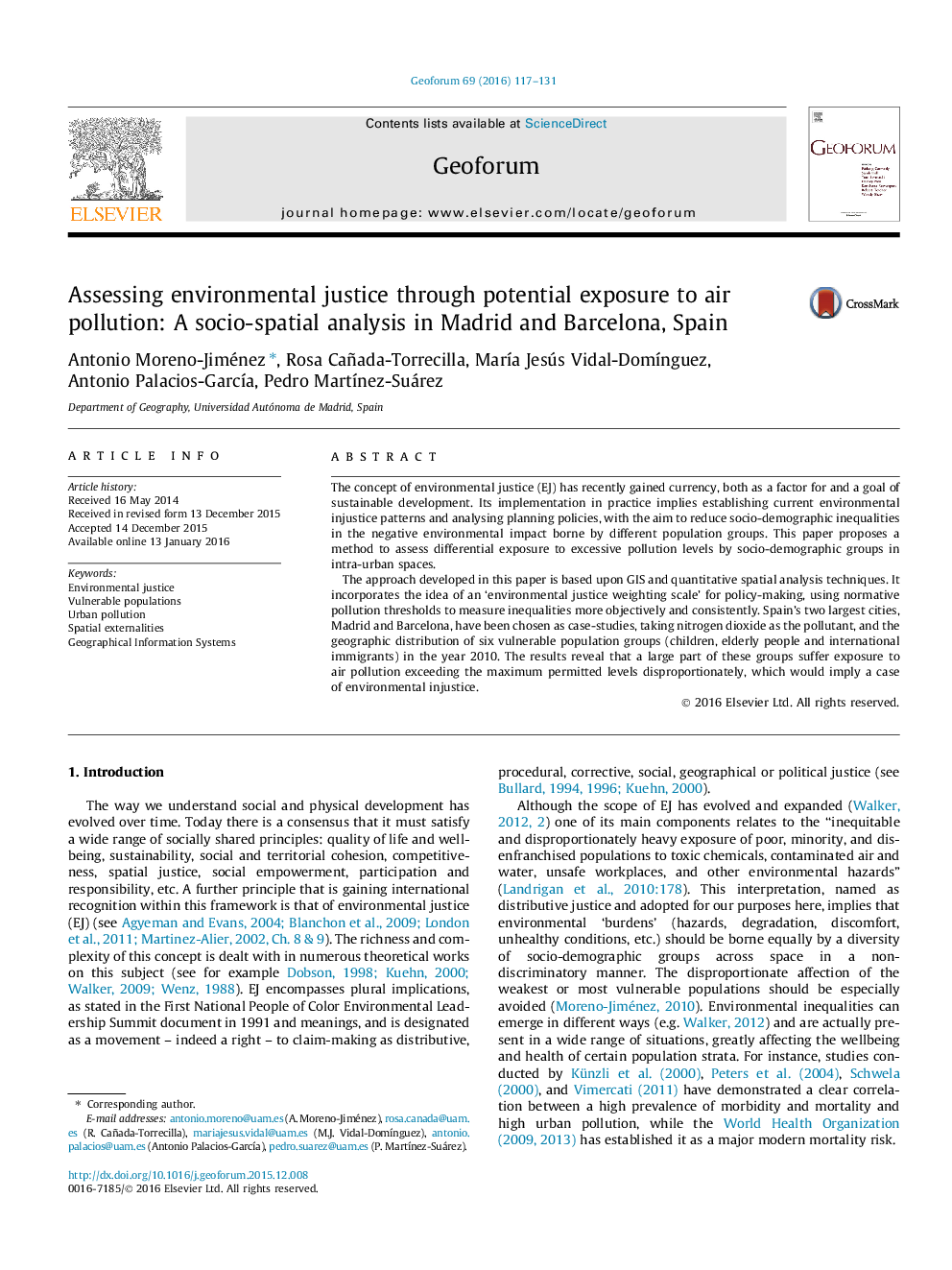| Article ID | Journal | Published Year | Pages | File Type |
|---|---|---|---|---|
| 5073628 | Geoforum | 2016 | 15 Pages |
â¢A preliminary analysis of EJ in the two main Spanish cities, Madrid and Barcelona.â¢Proposal of a baseline methodology for EJ evaluation.â¢The goodness-of-fit test and an 'EJ scale' are effective tools for comparative assessment.â¢Elderly people and immigrants' areas tend to bear an unequal level of NO2 burden.
The concept of environmental justice (EJ) has recently gained currency, both as a factor for and a goal of sustainable development. Its implementation in practice implies establishing current environmental injustice patterns and analysing planning policies, with the aim to reduce socio-demographic inequalities in the negative environmental impact borne by different population groups. This paper proposes a method to assess differential exposure to excessive pollution levels by socio-demographic groups in intra-urban spaces.The approach developed in this paper is based upon GIS and quantitative spatial analysis techniques. It incorporates the idea of an 'environmental justice weighting scale' for policy-making, using normative pollution thresholds to measure inequalities more objectively and consistently. Spain's two largest cities, Madrid and Barcelona, have been chosen as case-studies, taking nitrogen dioxide as the pollutant, and the geographic distribution of six vulnerable population groups (children, elderly people and international immigrants) in the year 2010. The results reveal that a large part of these groups suffer exposure to air pollution exceeding the maximum permitted levels disproportionately, which would imply a case of environmental injustice.
